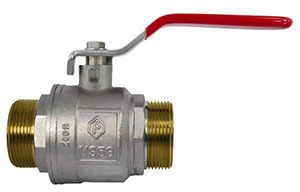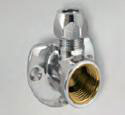"The purpose of the Ordinance is to protect human health from the adverse effects resulting from the contamination of water intended for human consumption by ensuring its fitness for human consumption and purity [...]". (§1 TrinkwV)
The Drinking Water Ordinance includes regulations on:
- Condition of the drinking water
- Preparation and disinfection
- Obligations of the contractor or other owner of a supply installation
- Monitoring of drinking water quality
- Criminal offences and administrative offences
So far, the UBA has published recommendations and guidelines on this subject, which still have a less binding status. In the next few years, these will be transformed into assessment principles. Based on the Drinking Water Ordinance, the Federal Environment Agency has already developed an assessment basis for metallic materials in contact with drinking water. This also contains the list ("UBA positive list") of materials suitable for drinking water. The assessment basis became effective on 10.04.2015. This date marked the beginning of the two-year transitional period according to § 17 para. 3 TrinkwV 2001, which ends on 10.04.2017. On 28.01.2016, there was an amendment to the assessment basis for metallic materials with the publication of a supplementary positive list.

Only metallic materials from this current UBA positive list are to be used when installing or maintaining a new drinking water pipe. This is proven by product certificates or manufacturer's confirmation.
Affected are all water-bearing components. According to a statement by the VDMA, valve manufacturers should take this list of materials into account at an early stage during the transitional period. Products that are stored, for example, in wholesalers or craftsmen's workshops, may also no longer be installed in drinking water installations after 10.04.2017 if they still contain materials that are not included in the UBA positive list (as of 28.01.2016). Therefore, the VDMA trade association advises converting all stocks in good time.
After the expiry of the two-year transitional period, installation of products containing materials that are not included in the positive list constitutes an administrative offence according to §25 TrinkwV, which can be punished with a fine. Here, the installation company is also under obligation and can be held liable if necessary.
Your puteus GmbH has therefore been testing all materials used for a long time in order to be able to guarantee the highest safety and hygiene. Only high-quality brass materials are used based on the positive list for valves and fittings in the area of water-bearing parts.

In order to exclude nickel contamination of drinking water, the water-bearing parts of our valves and fittings are not chrome-plated/nickel-plated, as the Drinking Water Ordinance stipulates that water quality must be tested, especially in commercial apartment buildings or public buildings. If these regular tests show that the limits for metals (e.g. lead, cadmium, iron, copper, nickel, zinc) are exceeded, the local health authority must be informed and countermeasures must be taken at one's own expense.

The German Technical and Scientific Association for Gas and Water (DVGW) points out that an increased nickel content in drinking water has been scientifically proven to be not insignificantly related to nickel emissions in pipes and fittings. There is no general ban on nickel in fittings and installation components today, but there are default values for legally prescribed limit values at tapping points:
Limit value for nickel in drinking water at 20 micrograms/litre
For fittings, a proportional limit value of 10 micrograms/litre
As a manufacturer, we see it as our duty to take the appropriate measures today to keep the nickel release of our products below the legal limits. For this reason, our products are regularly controlled. We can also prove this with an ISO certification.
